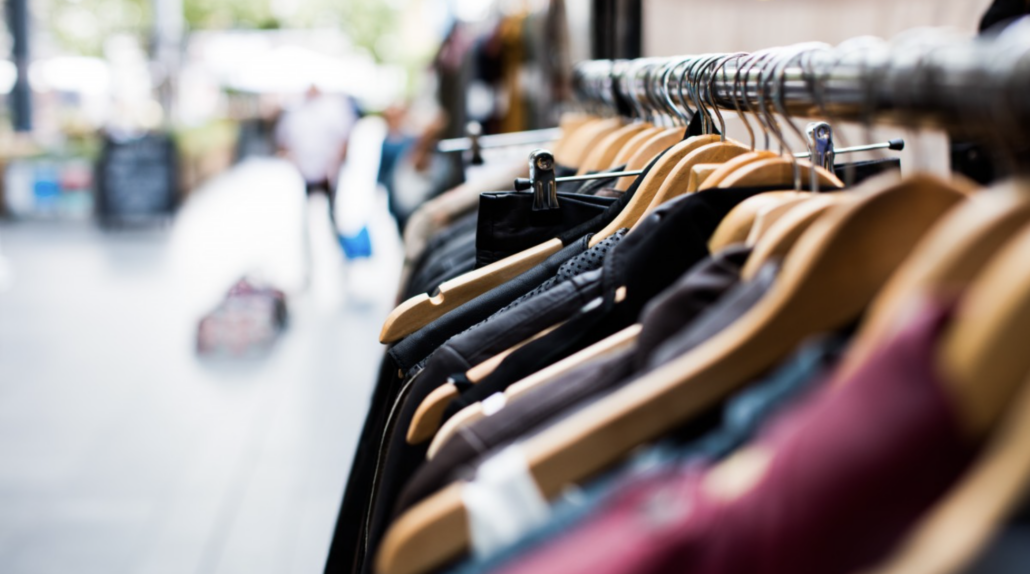By: Lauren Formosa, WMEAC Intern
As the seasons begin to change, people across West Michigan are thinking about swapping their t-shirts and shorts for sweaters and pants. And what better time is there to think about cleaning out your closet and adding some new pieces from your local thrift store?
The secondhand market is quickly becoming a powerhouse in the apparel industry, growing faster than ever according to tredUP’s 2022 Resale Report. Clothing resale across the United States saw a 58 percent growth in 2021, the highest in five years, and is expected to grow 16 times faster than the broader clothing retail sector by 2026.
Although a large part of the intrigue of the secondhand market comes from the affordable prices and the thrill of finding hidden gems amongst mountains of unwanted items, secondhand shopping also offers a sustainable solution to overconsumption in the apparel industry. However, it still has to compete with the growing number of fast fashion brands that offer cheap and trendy styles in record time, especially now that more Gen Z and Millennial shoppers are looking for ways to stay fashionable without breaking the bank.
With growing concerns about the economic trajectory the U.S. markets are heading in, how can people be eco-conscious without breaking the bank? The solution to this problem: thrifting and resale.
History of Apparel
Like many industries, there was a time when fashion moved slowly and there wasn’t an insatiable need to provide consumers with the next best thing each week.
Until the fast fashion boom in the mid-2000s, clothing retail worked on a traditional four-season cycle with designers carefully planning their fall, winter, spring, and summer collections based on what they believed consumers would want. Clothes were made with higher quality materials and meant to withstand years of wear until the item needed to be replaced.
That is no longer the case, as evidenced by the massive success of retailers such as H&M, Shein, and Zara.
Brands like these now run roughly 52 “micro-seasons” yearly in an attempt to keep up with the ever-changing fashion landscape. It’s an expectation at this point for all brands, even high-end retailers, to release about one new collection a week and ensure their inventory is constantly updated for their customers.
At the current increased rate of apparel production the industry is experiencing, companies are able to replicate the newest trends in real-time. Their online stores can be updated almost daily with new items while their traditional storefronts may only have to wait a few weeks at most to receive new inventory.
The Issue with Fast Fashion
For all the improvements the apparel industry has seen in recent years to keep up with the high demands from modern consumers, the manufacturing process leaves a lot to be desired by more eco-conscious consumers.
Too many brands have abandoned quality to speed up production times, meaning items often don’t go through quality control and must be replaced more frequently. A shirt that could once last ten-plus years may now only have two or three years’ worth of wear at best. This business model forces buyers to over-consume apparel, replacing poor-quality items with more items of similar quality and throwing out what’s unusable.
These retailers also fall victim to overconsumption by producing more clothes than they can sell and having to send their overstock to the landfill. Altogether, both retailer and consumer overconsumption exacerbates the issue of clothes ending up in landfills, with 11 million tons of textile waste produced in the United States each year.
Under the fast fashion model, the lifecycle of a piece of clothing is severely cut down and almost guaranteed to end its cycle in the trash. Further, the clothes that end up in landfills are made of synthetic fabrics and treated with harsh chemicals, making them take longer to degrade than an average cotton-made piece of apparel.
The Future is Circular
The arguably best solution for the overconsumption issue the traditional clothing sector faces is secondhand and resale shopping. When shopping secondhand, you give second chances to garments that otherwise would have been trashed and add unique pieces to your wardrobe.
Creating a wardrobe with primarily new-to-you and thrifted items promotes what thredUP refers to as “circular closets.” Secondhand items are more often re-donated once the owner decides to get rid of it, extending their lifespans and creating a circular cycle where thrifted items end up back at the thrift store when no longer needed. Even if a re-donated item is too worn to be resold, the store is more likely to recycle or reuse them as rags than to send them to a landfill.
Thrifting, according to the thredUP report, also allows shoppers to stretch their apparel budget without the guilt of buying into fast fashion, which has become more important as Americans look to spend more on essentials such as groceries or gas. Although some fast fashion retailers offer similar prices to resold items, the quality is what sets thrifted items apart in the competition for wallet-friendly shopping. Consumers will often find garments that can last years of wear and wash from the thrift store at comparable prices to their fast fashion counterparts.
Regardless of past perceptions of the easy accessibility to fast fashion, thrifting and secondhand shopping is an increasingly attractive solution to the apparel industry’s problems that seemingly never improve. If you want to shop affordably and find pieces that will last, maybe it’s time to give new-to-you clothing a shot. Your closet–and the environment–will thank you later.


